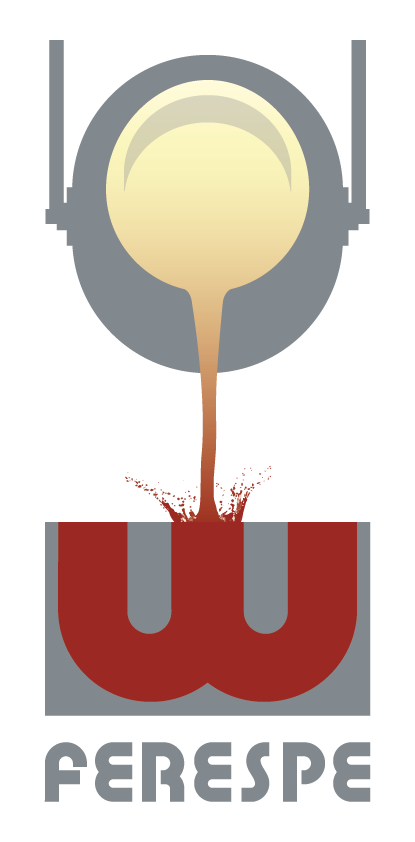Our Portugal 2020 projects
Adimaq
Project Name: Adimaq – Application 3433 Project Code: POCI-01-0247-Feder-3433 Main Objective: Strengthen research, technological development and innovation. Region of Intervention: North Beneficiary Entity: CEI – Companhia de Equipamentos Industriais, Lda; INEGI – Instituto de Ciência e Inovação em Engenharia Mecânica e Engenharia Industrial; FERESPE – Fundição de Ferro e Aço, Lda Approval Date: 01.10.2015 Start Date: 01/10/2015 End Date: 30/09/2018 Total Elegible Costs: 1.696.039,68€ European Union Finance Support: 1.145.082,33€ FEDER –EUR Objectives, activities and expected/achieved results: The ADIMAQ project aimed the development of a hybrid equipment asset that combines the technologies of additive manufacturing (FA) by extrusion/deposition and subtractive manufacturing (FS) by 5-axis machining capable of manufacturing production means (molds) and models in different materials with increased efficiencies in cost, raw material utilization and geometry exploration. The highly innovative hybrid equipment that combines extrusion additive manufacturing and 5-axis subtractive machining technologies. The equipment consists of the following modules: Structural; Additive manufacturing system; Subtractive Manufacturing System; Control unit; and Mixing System Storage and transportation of plaster. The ADIMAQ project had the following specific objectives: 1 – Development and construction of a hybrid equipment asset that combines the technologies of additive extrusion manufacturing and 5-axis subtractive machining manufacturing – ADIMAQ. 2 – Equipment capable of manufacturing production means (molds, moldings and tools) of silica sand, gypsum and/or thermosetting resins, with increased cost, raw material utilization and geometry exploration efficiencies. 3 – Development of a hybrid production technology with additive manufacturing and machining for non-metallic materials and the development of control and sensing algorithms for the additive manufacturing process using extrusion of thermosetting pastes or plaster. 4 – Concept development and design of additive head for the extrusion of pastes. 5 – Development of an ISO code path adaptation procedure to meet the specific needs of additive manufacturing with unconventional materials. 6 – Design and prototype a Physical Laboratory System to allow the study and validation of the additive process, both at the level of development of extrudable pastes, and at the level of generation of concepts and deposition strategies. A1. Preliminary Studies The main results of the first activity A1 include the benchmarking elaborated on paste extrusion systems; the test geometries identified for each target sector (i.e., foundry, sanitary ceramics and composite molds); the collection made at the level of standards, directives and laws relevant to the industrialization of the ADIMAQ process/product; and the business model built for the ADIMAQ product. A2. Specification This activity highlights the work done to define the raw material requirements and technical specifications for ADIMAQ equipment described in deliverable E2.1. A3. Skills acquisition and development In this activity, multidisciplinary skills were acquired and developed in the formulation, deposition and machining of pastes and/or abrasive materials. In addition, knowledge and skills on numerical control, robotic integration and CAD/CAM interface and the adaptation of these concepts to additive paste deposition manufacturing were deepened. A4. Development Concerning the subtractive machining process, some cutting strategies for abrasive materials were explored using different tools (PCD, WC and high-speed steel) and cutting parameters, as well as the functional component of sand molding, plasterboard and molds for composites, finished by 5-axis machining. The results of this work contributed to identify needs intrinsic to the machining process of non-conventional abrasive materials. For additive manufacturing, a 3-axis physical laboratory system (SLF) was developed for extrusion and deposition testing. For this SLF a beckoff module was purchased which was programmed to interact with the servomotors and other actuators of the system and to control their Cartesian movements. With this firmware several plaster deposition tests were performed for software and controller debugging effects, as well as for optimization of kinematic parameters (extrusion velocity, straight deposition velocity, curved deposition velocity, etc.). Also noteworthy is the work done by the consortium on the mechanical design of the additive head, which is considered revolutionary as it presents a working principle based on a peristaltic pump rather than the traditional Archimedes screw system. A5. Prototype building, pilot experimental installation The result of this activity consists of the final ADIMAQ prototype, which was built according to the detail design elaborated in the previous activity A4. A6. Tests and trials In this activity several industrial tests were performed to certify and evaluate the integrated functioning of the final prototype ADIMAQ. ADIMAQ prototype equipment is designed for the manufacture of oversized molds and moldings using plaster extrusion, which enables agile and inexpensive fabrication of different mold and moldings configurations for real applications. The results achieved are in line with the main design objectives in particular the quality/performance of the proposed additive manufacturing and subtractive manufacturing systems as the parts produced on the ADIMAQ prototype equipment exhibit quality and performance for sand molding short, to be later cast to the level of factory production standards. From the tests it was possible to obtain a melt with precision and finishing that allow obtaining good quality parts. Additionally, the sand moldings machined on the ADIMAQ prototype equipment yield quite satisfactory results.




